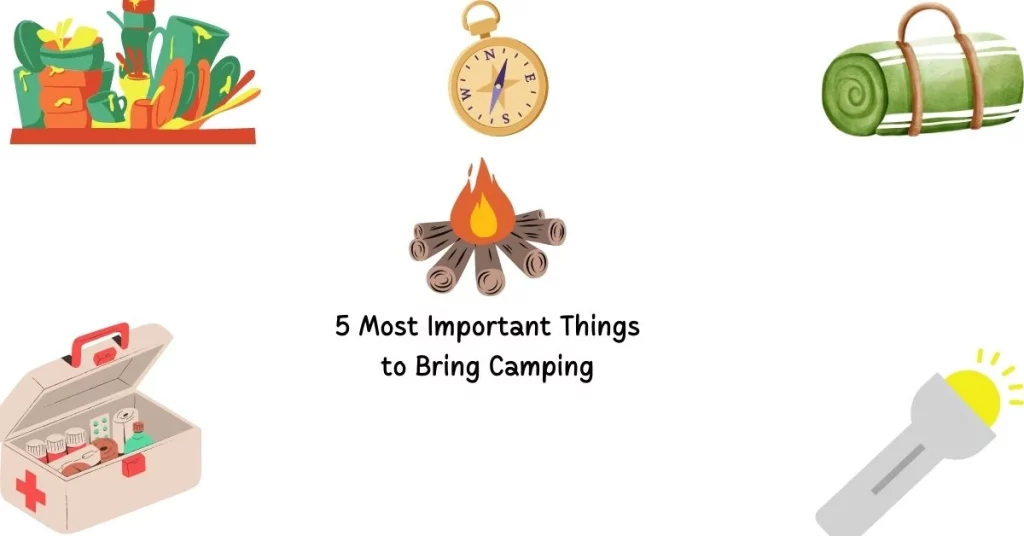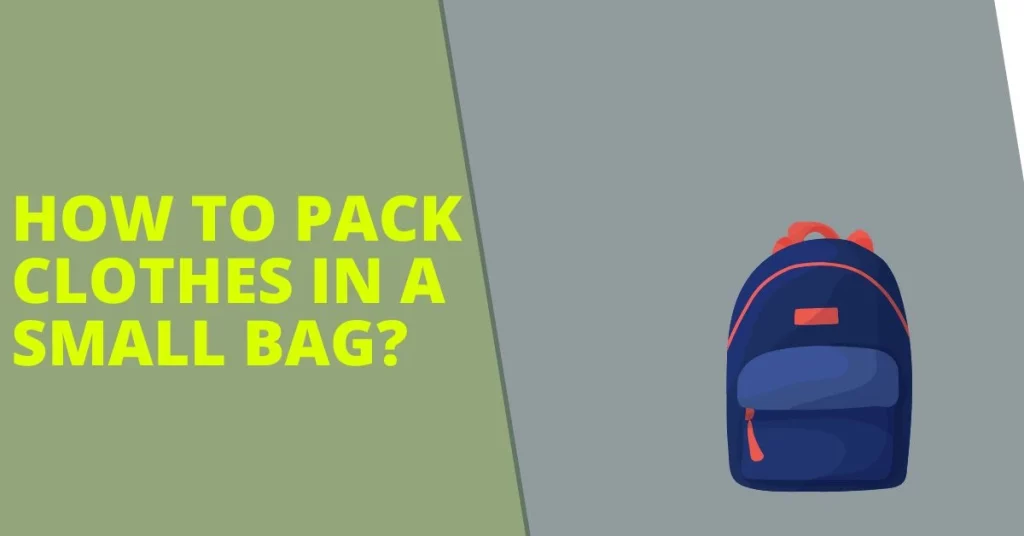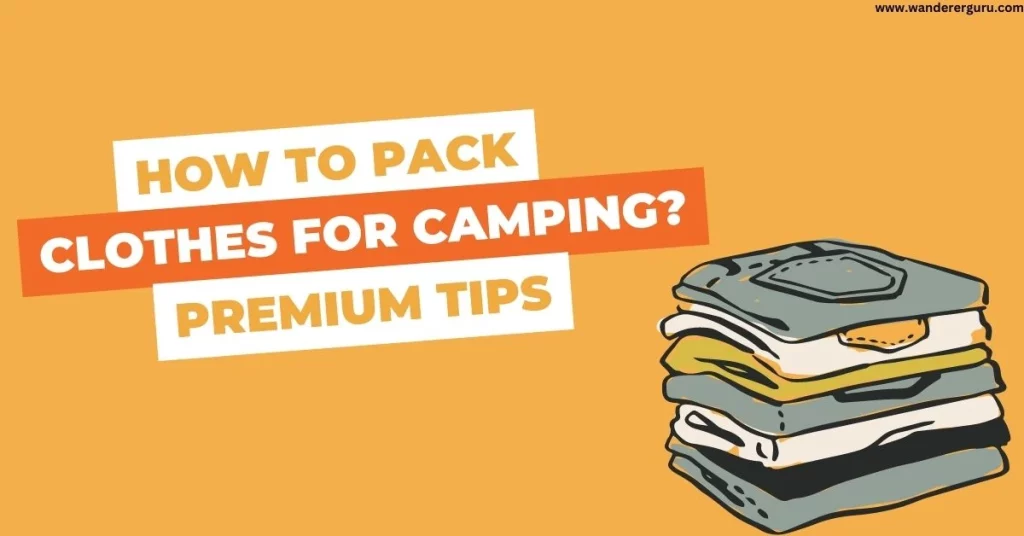It is necessary to pack clothes for camping properly if you’re are eagerly preparing for your upcoming camping adventure? From choosing the perfect destination to gathering all the necessary gear, planning a successful camping trip requires careful consideration. Among the essential aspects of preparation is packing the right clothes. Efficiently organizing and packing your clothing can help optimize space, ensure comfort, and protect against unpredictable weather conditions.
In this guide, we will provide expert advice and practical tips on how to pack clothes for camping. Whether you’re a seasoned camper or embarking on your first outdoor adventure, our recommendations will help you pack efficiently, stay comfortable, and make the most of your camping experience.
Bonus:
HOW TO KEEP SNAKES AWAY FROM YOUR CAMPSITE?
How to Pack Clothes for Backpacking: Streamlining Your Gear
Packaging light and smart when embarking on a backpacking trip is crucial. Follow these steps to optimize your backpacking clothes:
- Roll, Don’t Fold: Rolling your clothes instead of folding them saves space and minimizes wrinkles. This technique is especially useful when packing lightweight and non-bulky garments.
- Utilize Compression Bags: Compression bags are a backpacker’s best friend. These nifty storage solutions allow you to compress your clothes, maximizing space utilization. Place your clothes inside the bag, seal it, and roll out the air to create a compact package.
- Pack Versatile Clothing: Opt for versatile, mixed, and matched clothing items. Pack items suitable for various weather conditions and can be layered for warmth. This way, you can carry fewer items while still having options.
- Consider the Essentials: Focus on packing the essentials such as underwear, socks, and lightweight shirts. Avoid overpacking unnecessary items that will only weigh you down.
5 Most Important Things to Bring Camping: Beyond Clothing

While clothing is essential, there are other crucial items you shouldn’t forget when packing for a camping trip. Here are the top five essentials:
- Tent and Sleeping Gear: Ensure you have a high-quality tent, sleeping bag, and sleeping pad for a comfortable night’s rest outdoors.
- Cooking Supplies: Pack a portable stove, cookware, utensils, and food provisions. Don’t forget essentials like matches or a lighter.
- First Aid Kit: Accidents happen, even in the wilderness. Be prepared with a well-stocked first aid kit containing bandages, antiseptics, pain relievers, and any necessary personal medications.
- Lighting Equipment: A reliable flashlight or headlamp is essential for dark navigation. Don’t forget to pack extra batteries!
- Navigation Tools: Bring a map, compass, or GPS device to ensure you can find your way around the camping area.
Things Every Girl Should Bring Camping: A Female Perspective
Ladies, here are a few additional items to consider when packing for your camping adventure:
- Hygiene Essentials: Pack feminine hygiene products, wet wipes, and biodegradable toiletries. Maintaining cleanliness is crucial even when outdoors.
- Appropriate Clothing: Pack comfortable and functional clothing, including moisture-wicking underwear, sports bras, and quick-drying pants or shorts. Don’t forget a hat and sunglasses for sun protection!
- Extra Layers: As temperatures fluctuate, especially in the evening, bringing additional layers like a warm fleece jacket or a lightweight down vest is wise.
Bonus:
DOME TENTS VS CABIN TENTS WHICH ONE IS BETTER?
What to Wear for Camping? Dressing for Outdoor Success
When it comes to camping, wearing the right clothing can significantly improve your comfort and overall experience. Here are some tips on what to wear:
- Choose Breathable Fabrics: Opt for a dress from breathable cotton, linen, or moisture-wicking materials. These fabrics allow air to circulate and help keep you cool in hot weather.
- Layer Up: Layering is key, allowing you to adjust your clothing according to the temperature. Start with a moisture-wicking base layer, add a light insulating layer, and top it off with a waterproof and windproof outer layer.
- Protective Footwear: Invest in sturdy hiking boots or trail shoes. They provide ankle support and good traction and protect your feet from rough terrain. Don’t forget to bring extra socks!
- Sun Protection: Shield yourself from the sun by wearing a wide-brimmed hat, sunglasses, and sunscreen with a high SPF rating. Protecting your skin is essential, even when camping.
Camping Bags for Clothes: Maximizing Storage Space
Choosing the right camping bags for your clothes is essential for optimizing storage space and organising your items. Consider the following options:
- Backpacks: Backpacks are ideal for backpacking trips or shorter camping excursions. Look for lightweight backpacks with multiple compartments to distribute weight evenly and organise your clothes. Click here to buy some good backpacks.
- Duffel Bags: Duffel bags offer spacious storage for larger items and are great for car camping. Look for bags with sturdy handles and shoulder straps for easy transportation.
- Compression Sacks: Compression sacks are excellent for maximizing space in your backpack. They allow you to compress your clothes, reducing their size significantly.
What Not to Bring Camping? Simplifying Your Packing List
To avoid overpacking and ensure a more streamlined camping experience, here are some items you can leave behind:
- Unnecessary Electronics: While bringing your gadgets is tempting, consider disconnecting from technology and embracing the outdoors. Leave unnecessary electronics at home or limit their use.
- Excessive Makeup and Jewelry: Keep your beauty routine simple while camping. Leave behind excessive makeup and valuable jewellery to minimize the risk of loss or damage.
- Bulky Bedding: Opt for lightweight and compact sleeping bags or camping quilts instead of bulky bedding to save space.
How to Pack Clothes in a Small Bag? Packing Strategies

If you’re working with a small bag, these packing strategies can help you make the most of the limited space:
- Downsize Your Wardrobe: Select versatile clothing items that can be mixed and matched. Stick to essentials and avoid bulky or unnecessary items.
- Wear Bulky Items: When travelling, wear more overweight clothing items, such as jackets or boots, to free up space in your bag.
- Pack Smartly: Utilize packing cubes or compression bags to condense your clothing and maximize space efficiency. For more ideas visit my Pinterest.
Conclusion
When packing clothes for camping, it’s essential to strike a balance between functionality and space efficiency. Choose lightweight, moisture-wicking fabrics that are suitable for various weather conditions. Roll your clothes instead of folding them to save space and minimize wrinkles. Organize them in waterproof bags or packing cubes to keep them dry and easily accessible. Remember to pack versatile pieces that can be layered, mixed, and matched. With these tips, you’ll be ready to enjoy your camping adventure with a well-packed and organized wardrobe.
FAQs
Q.1 How many clothes should I pack for a camping trip?
Ans: The number of sets of clothes you should pack for a camping trip depends on the duration of your trip and the weather conditions. Pack enough for each day, plus extras for emergencies.
Q.2 Is it necessary to bring formal clothes for camping?
Ans: Formal clothes are generally unnecessary for camping, as they focus on comfort and practicality. Pack casual and functional attire suitable for outdoor activities instead.
Q.3 Is car camping safe?
Ans: Car camping can be safe if you choose a secure campground, lock your vehicle, and take precautions. Be aware of your surroundings and follow safety guidelines to minimize risks.
Bonus:

